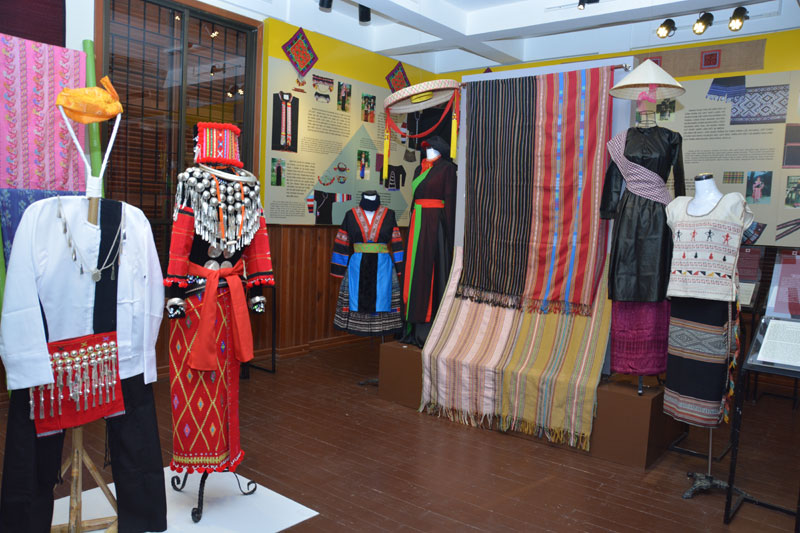It was textiles that brought Indian traders to Southeast Asia over a millennium ago, and it was textiles that brought India and Cambodia together this week for the opening of the Asian Traditional Textiles Museum in Siem Reap City.
More than a decade in the making, the museum is one of the first major projects of the Mekong-Ganga Cooperation, a collaboration that began in 2000 between India, Cambodia, Laos, Burma, Thailand and Vietnam to promote tourism and culture.

“We spent almost one year to gather the five countries of the Mekong to set up the museum,” said Kerya Chau Sun, a spokeswoman for the Apsara Authority.
Museum construction began in 2010. Although the site is outside Angkor Archaeological Park, museum ownership was granted to the Aspara Authority, the management agency responsible for the protection, conservation and tourist development of the park.
Indian Ambassador Dinesh Patnaik said in an interview that his country’s interest in the museum grew out of India’s historical influence on textiles in Southeast Asia.
“Textiles drive commerce, drive relations, drive artisans, drive designs,” Mr. Patnaik said. “It’s part of the fabric of the people. A people-to-people connection was through textiles.”
India contributed $1 million toward the museum’s construction, covering most of the $1.7 million cost, and will help pay for the museum’s maintenance, the director’s salary and for exhibits.
All six Mekong-Ganga countries will contribute textiles for the exhibits, but Siem Reap City was chosen as the location because millions of tourists visit Angkor Wat every year.
Besides exhibits, the museum will be a center for workshops and for further development of silk, cotton, printing and artisan skills. The space will be used for fashion shows. A garden will grow plants that can be used for natural dyes.
“This will be an ongoing reminder to draw attention to all the pollution caused by chemical products,” Cabinet Minister Sok An said Monday at the museum’s opening. “We hope that this arrangement encourages going back to the traditional way of weaving and the use of natural products.”
Although the museum is not yet fully open to the public, director Charu Smith Gupta said tours are available by appointment every day but Tuesday. She said she did not know when the museum would be fully open, as it will depend on when the exhibitions are complete.
“Right now, the focus is all the countries should have their collection, but one country is missing,” she said, referring to Thailand. “Once all six countries give their galleries, then we can say the museum will be complete.”
The museum is located at Avenue 60 m, Boeng Daun Pa village, Sangkat Slakram, Siem Reap City. Appointments can be arranged by calling the director, Charu Smith Gupta, at +855 (0)78 555 002.




